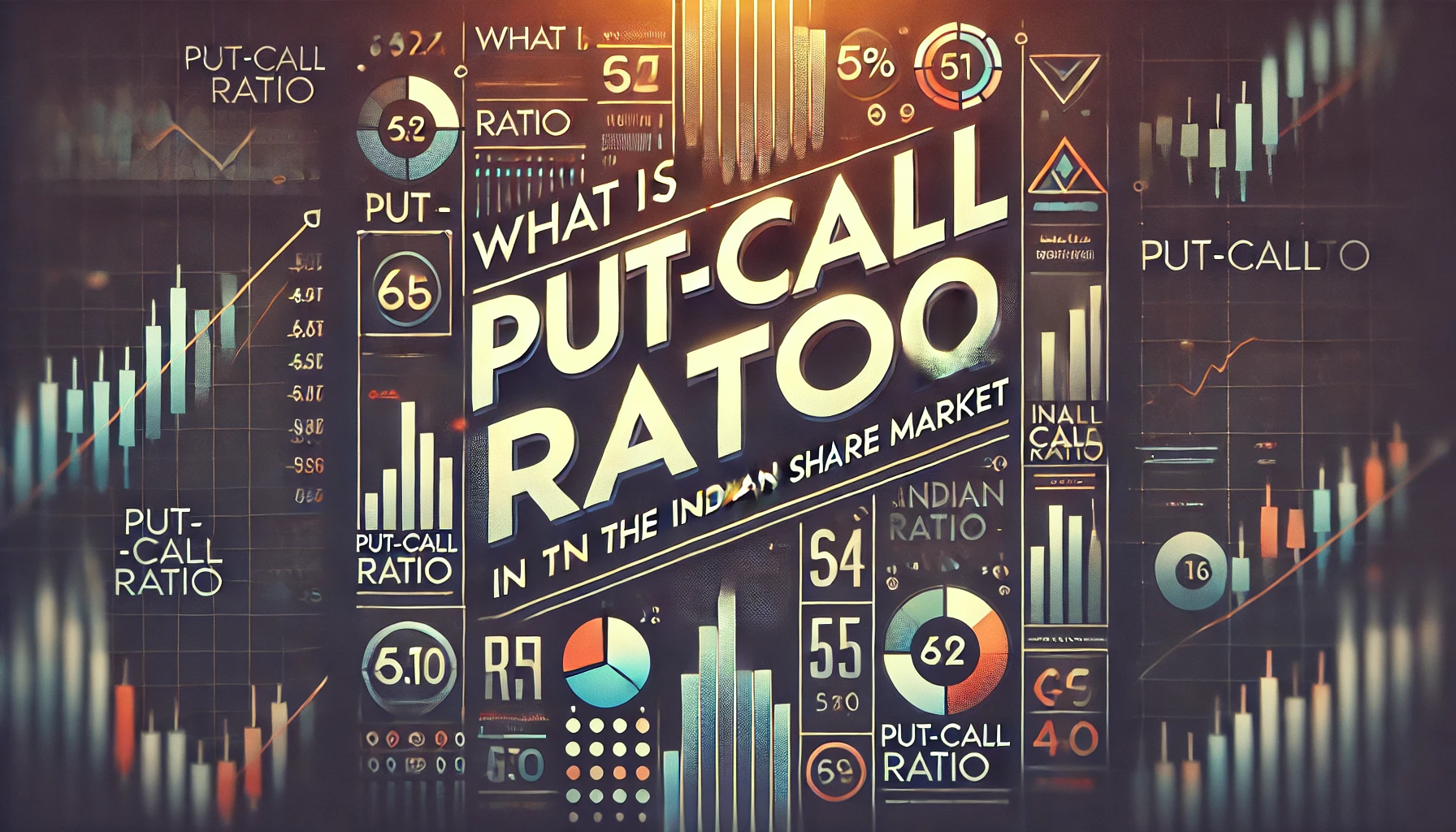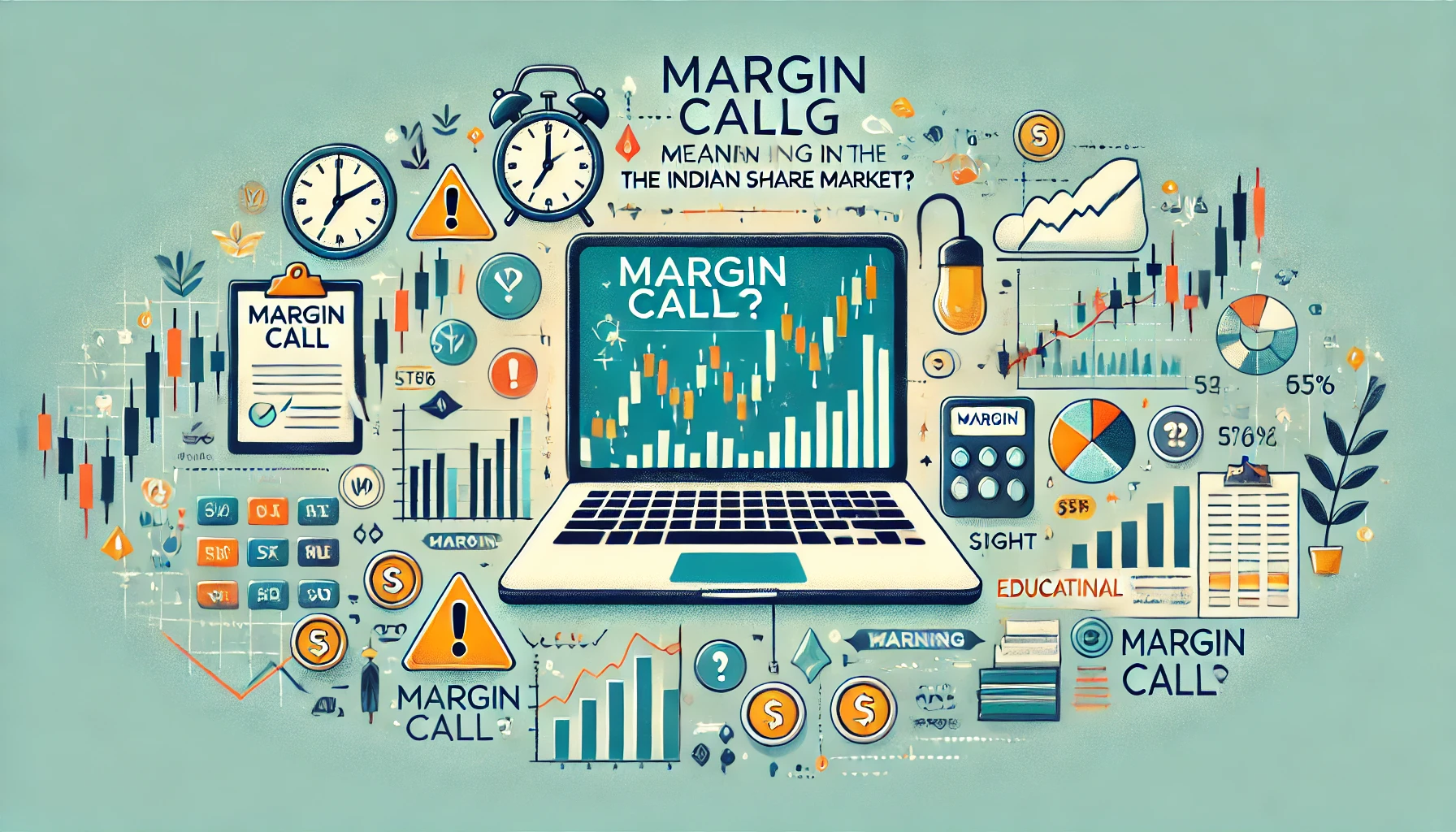The Put-Call Ratio (PCR) is one of the most widely used indicators in options trading and technical analysis. It helps traders gauge market sentiment by comparing the volume of put options to call options. This ratio provides insights into whether the market sentiment is bearish or bullish, making it a valuable tool for understanding potential price movements in the Indian share market.
In this in-depth guide, we will cover everything you need to know about the Put-Call Ratio—how it is calculated, its significance, and how it is applied in trading strategies. We’ll also provide historical data and real-world examples to explain the practical applications of this ratio.
What is the Put-Call Ratio?
The Put-Call Ratio is the ratio of the trading volume or open interest of put options to call options. Put options give the holder the right to sell the underlying asset, while call options give the holder the right to buy the asset. The PCR helps measure the prevailing sentiment in the market, as put options are typically associated with bearish positions and call options with bullish positions.
Put−CallRatio(PCR)=Put Option Volume/Call Option Volume
Key Points to Remember:
- A high PCR indicates a bearish market sentiment, as more traders are buying put options.
- A low PCR signals bullish market sentiment, as call options are more in demand.
Significance of the Put-Call Ratio in the Indian Market
The Put-Call Ratio is a critical indicator of market sentiment. It is used by options traders, institutional investors, and technical analysts to predict market trends. In the Indian share market, where options trading is highly liquid, the PCR becomes particularly relevant for traders looking to gauge the direction of the Nifty 50, Sensex, or individual stocks.
- Bullish Signal: A low Put-Call Ratio indicates that call options are in higher demand, which usually signifies optimism about future price movements.
- Bearish Signal: A high Put-Call Ratio indicates that traders are buying more puts than calls, signaling fear or uncertainty about the market’s direction.
Historical Overview of the Put-Call Ratio
The Put-Call Ratio has been widely adopted by traders in India since the introduction of options trading on the National Stock Exchange (NSE) in 2001. The ratio is commonly applied to index options (such as Nifty 50 options) and individual stock options.
Table 1: Historical Put-Call Ratio of Nifty 50 (2018-2023)
| Year | Average PCR | Nifty 50 Performance (%) |
|---|---|---|
| 2018 | 0.85 | +3.15% |
| 2019 | 0.90 | +11.25% |
| 2020 | 1.15 | -8.50% |
| 2021 | 0.75 | +24.12% |
| 2022 | 0.98 | +10.24% |
| 2023 | 1.05 | +14.75% |
The table above shows that a higher Put-Call Ratio often coincides with bearish market performance, while lower PCR values are associated with bullish trends.
How to Calculate the Put-Call Ratio
The Put-Call Ratio can be calculated using either trading volume or open interest:
- Volume-Based PCR: This compares the total volume of puts traded to calls traded in a day.
- Open Interest-Based PCR: This compares the open interest (total number of outstanding options contracts) in puts and calls.
Let’s take a look at a step-by-step example:
- Determine the Volume: Assume that the volume of put options traded on a given day is 10,000 and the volume of call options is 20,000.
- Calculate the PCR: The PCR would be:
PCR=10,000/20,000=0.50
This ratio indicates a bullish market sentiment, as more call options were traded than put options.
Types of Put-Call Ratios
There are two primary types of PCRs used by traders in the Indian market:
- Index PCR: This ratio is calculated using index options such as Nifty 50 or Sensex. It reflects overall market sentiment.
- Stock PCR: This ratio is calculated using options on individual stocks like Reliance Industries, HDFC, or Infosys. It reflects sentiment for a particular stock.
Table 2: Example of Put-Call Ratio for Reliance Industries (2023)
| Month | Put Volume | Call Volume | PCR | Stock Performance (%) |
|---|---|---|---|---|
| January | 50,000 | 80,000 | 0.63 | +4.2% |
| March | 75,000 | 65,000 | 1.15 | -2.5% |
| May | 90,000 | 100,000 | 0.90 | +1.5% |
| July | 85,000 | 70,000 | 1.21 | -3.0% |
| October | 60,000 | 90,000 | 0.67 | +3.8% |
In the table above, we see how the PCR for Reliance Industries fluctuates across different months, indicating changes in sentiment towards the stock.
How to Use the Put-Call Ratio in Trading Strategies
Traders and investors use the PCR to make informed decisions in both bullish and bearish markets. Here are a few strategies:
1. Contrarian Strategy
A contrarian strategy involves betting against the prevailing market sentiment. When the PCR reaches extreme levels, it often signals that the market may reverse. For instance:
- Extremely High PCR (>1.5): Indicates that the market is overly bearish, and a reversal to bullish trends may occur.
- Extremely Low PCR (<0.5): Suggests excessive bullishness, which could precede a market correction.
2. Momentum Strategy
The momentum strategy involves trading in the direction of the market’s momentum:
- Rising PCR: If the PCR rises consistently, it indicates increasing bearish sentiment, and traders may short positions or buy put options.
- Falling PCR: A falling PCR suggests rising bullishness, and traders may initiate long positions or buy call options.
Factors Influencing the Put-Call Ratio
Several factors can influence the PCR, including:
- Market Volatility: Increased volatility often leads to a higher PCR as traders buy more put options to hedge their positions.
- Economic Data Releases: Important economic announcements can cause shifts in market sentiment, leading to fluctuations in the PCR.
- Earnings Reports: The release of corporate earnings can significantly affect stock PCR, as investors adjust their positions based on company performance.
Historical Trends in the Put-Call Ratio
The PCR has shown to be a reliable indicator during critical market events in India. For instance, during the 2008 financial crisis, the PCR soared as investors rushed to buy put options, reflecting heightened bearish sentiment.
Table 3: Put-Call Ratio During Major Market Events
| Event | Date | PCR | Nifty 50 Performance |
|---|---|---|---|
| COVID-19 Market Crash | March 2020 | 1.35 | -20% |
| Demonetization Announcement | November 2016 | 1.10 | -10% |
| Global Financial Crisis | September 2008 | 1.50 | -45% |
| Lok Sabha Election Results 2019 | May 2019 | 0.65 | +8% |
The table illustrates that the PCR rises during periods of uncertainty and market crises, reflecting the shift towards put options for protection against downside risk.
Advantages of Using the Put-Call Ratio
- Simple to Calculate: The PCR is relatively easy to compute using either volume or open interest data.
- Market Sentiment Indicator: It provides a quick snapshot of market sentiment, making it valuable for short-term trading strategies.
- Versatile: The PCR can be applied to both index and stock options, making it a flexible tool for traders in various markets.
Limitations of the Put-Call Ratio
While the PCR is a useful indicator, it does have its limitations:
- Lagging Indicator: The PCR is a lagging indicator, meaning it reflects past market activity and may not always predict future price movements.
- Short-Term Indicator: The PCR is most effective for short-term analysis and may not provide long-term insights.
- Extreme Values: Extreme PCR values can persist for extended periods, making it challenging to time market reversals.
Conclusion
The Put-Call Ratio is a powerful tool for assessing market sentiment in the Indian share market. By comparing the volume or open interest of put options to call options, traders can gauge whether the market is leaning towards bullish or bearish sentiment. Although it is not a perfect indicator, when used in conjunction with other technical and fundamental analysis tools, the PCR can help investors make more informed decisions in options trading.
With its historical significance and relevance to market trends, the Put-Call Ratio remains a go-to metric for options traders in India.

What Is Implied Volatility?
In the realm of Indian share market derivatives, implied volatility (IV) plays a crucial role …

What is Margin Funding?
Margin funding is a powerful tool in the Indian share market that allows traders to …

Forward vs Future contract
In the Indian share market, derivatives such as forward and future contracts play a pivotal …

What is Margin Money?
Margin money is a crucial aspect of trading in the Indian share market, especially in …

What is Put-Call Ratio?
The Put-Call Ratio (PCR) is one of the most widely used indicators in options trading …

What is Derivatives?
Derivatives are financial instruments whose value is derived from an underlying asset or benchmark. In …

What is Cost of Carry?
The cost of carry is an essential concept in futures trading that reflects the cost …

What is futures
Futures are a fundamental part of derivatives trading in the Indian stock market. They allow …

Bullish Option Strategies
In the ever-evolving world of derivatives trading, options have become a powerful tool for investors …

Understanding Physical Settlement in Futures & Options Contracts: A Comprehensive Guide
In the world of derivatives trading, the concept of physical settlement has gained prominence, particularly …

what are call options
The Indian share market has expanded significantly over the years, attracting a growing number of …

What Is Credit Spread Strategy
In the world of options trading, the credit spread strategy is one of the most …

What Is a Forward Contract
A forward contract is a customized financial agreement between two parties to buy or sell …

Types of Derivatives in India
The Indian derivatives market has grown exponentially, becoming a vital tool for investors and traders …

What is Swaps Derivatives
In the world of derivatives, swaps are a special class of contracts that allow two …

Intrinsic Value and Time Value of Options
Options trading is one of the most widely used financial instruments in the Indian share …

What is Open Interest?
In the world of derivatives, the concept of “Open Interest” plays a crucial role in …

Types of underlying assets in derivatives
The Indian derivatives market has grown exponentially over the last few decades, thanks to its …

derivatives on Option Volatility & Pricing Strategies
The Indian share market derivatives segment is a dynamic environment where advanced traders rely heavily …

What is Futures Contract
The Indian share market offers various financial instruments that provide opportunities for investors and traders. …

What is implied volatility in options?
In the world of options trading, one of the most crucial elements to understand is …

Futures Pricing Formula
The Indian share market is known for its dynamic nature and offers various opportunities for …

What is an ITM Call Option?
The world of options trading is filled with technical terms that are crucial for investors …

What is Max Pain Theory?
The Indian share market is full of strategies and theories that traders use to predict …

What is OTM Call Options
In options trading, terms like “in the money” (ITM), “at the money” (ATM), and “out …

What Is Rollover
Rollover is a common term in the world of futures and derivatives trading, especially in …

Futures Prices Converge Upon Spot Prices
In the world of financial markets, futures contracts play a significant role. One of the …

Call Ratio Back Spread
In the Indian share market, advanced trading strategies such as the Call Ratio Back Spread …

Margin Call Meaning
A margin call is one of the most critical warnings in trading, often marking a …

What is Bermuda Option?
The financial markets are full of complex instruments, and one such tool is the Bermuda …


















